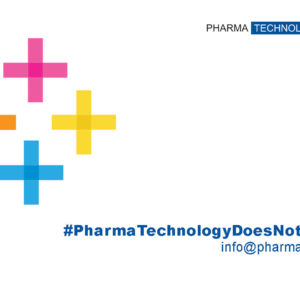 February 28th - March 5th - Join us at IFPAC-2021 that is going to be digital!
February 28th - March 5th - Join us at IFPAC-2021 that is going to be digital!
IFPAC - 2021 will be held February 28 -…
 What is Crucial in the Success of Automatic Visual Inspection?
What is Crucial in the Success of Automatic Visual Inspection?
The Benefits of Automated Visual Inspection over Manual Inspection…
 Pharma Technology in the Top 10 “Trends Gazelles 2020”
Pharma Technology in the Top 10 “Trends Gazelles 2020”
«I am proud to say that we have the…
 #PharmaTechnologyDoesNotStop - COVID-19 emergency
#PharmaTechnologyDoesNotStop - COVID-19 emergency
Following the government instructions to implement an effective containment…
 Addressing Dust Accumulation in Tablet Manufacturing
Addressing Dust Accumulation in Tablet Manufacturing
Dedusting equipment and techniques address problems associated with tablet…
 Exhibition | IFPAC - Washington D.C. - March 3-6, 2024
Exhibition | IFPAC - Washington D.C. - March 3-6, 2024
We will be present at IFPAC next month, the essential…

Transitioning from manual to automatic visual inspection of tablets and capsules brings forth a multitude of benefits, chief among them being consistency and reliability. Human inspectors, despite their best efforts, are subject to fatigue, variability in judgment, and limitations in speed. It was reported that manual visual inspection in general, which typically accounts for 10% or more of the total labour cost, can reach only up to 80–90% effectiveness and that human inspectors are prone to reject good products to satisfy quotas rather than to hold a constant quality level.* Automatic video inspection systems, on the other hand, can operate continuously for long period of time at high speeds and with constant and higher accuracy. These systems utilize advanced image technologies to capture detailed images of each tablet, allowing detection of processing minor defects that might be missed by the human eye. Additionally, automatic systems can easily keep up with the high production rates of modern manufacturing lines, ensuring that quality assurance does not become a bottleneck in the production process.
The visual appearance of tablets is an important identification property by both pharmacists and patients and therefore extremely important for proper medication. Visual defects on the tablet surface can impact the tablet’s therapeutic function, tablet identification, the prestige of the manufacturer, and the confidence of the end user in the integrity and quality of the drug product.
Unreliable visual inspection poses therefore significant risks to pharmaceutical manufacturers. Cosmetic defects that slip through the cracks can lead to batch recalls, legal liabilities, and severe damage to a company’s reputation.
Achieving a reliable high-speed high-quality 360° inspection hinges on the ability to maintain the tablet in a perfectly repeatable and stable position throughout the entire process flow. This is crucial for ensuring that every surface of the tablet is scrutinized in exactly the same manner, thereby eliminating any potential blind spots that could occur during tablet transfer.
Traditional inspection setups, including flat conveyors and roller-based transfer systems, inherently allow tablets to shift and rotate freely, resulting in both undetected defects (quality risk) and false rejects (loss of process yield). The Viswill vacuum belt system is designed to secure tablets in a fixed and stable position at very high transfer speeds. This ensures that as tablets and capsules are transferred under various cameras, they are presented identically every time, enabling accurate, repeatable inspection of the entire OSD product surface.
High-resolution color line-sensor cameras allow the detection of extremely small low-contrast defects, while 3D laser scanning cameras allow the detection of very small chips and emboss picking. Besides innovative camera sensor technology, the use of extremely high-speed image processing hardware and software allows the parallel processing of multiple inspection algorithms, maximizing the detection of a very wide range of visual defects.
As of today, the new Viswill T/CVIS-NSR is available. This new machine allows both the inspection of tablets and capsules on the same unit while offering an unmatched fast and easy product change-over and set-up.
*Newman T S and Jain A K 1995 A survey of automated visual inspection Comput. Vis. Image Underst. 61 231–62